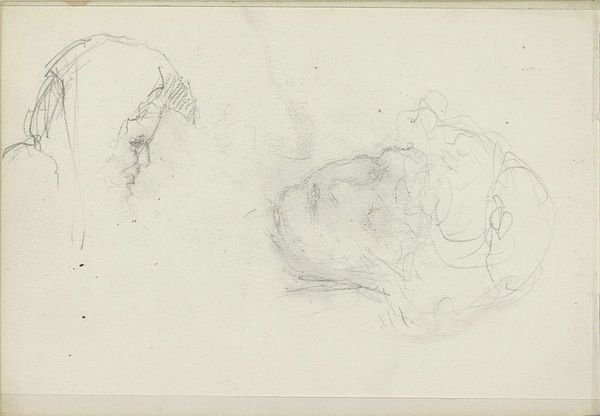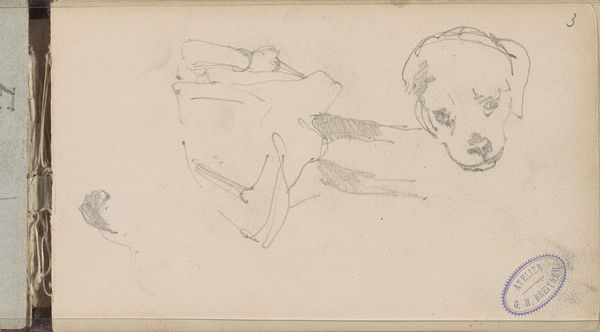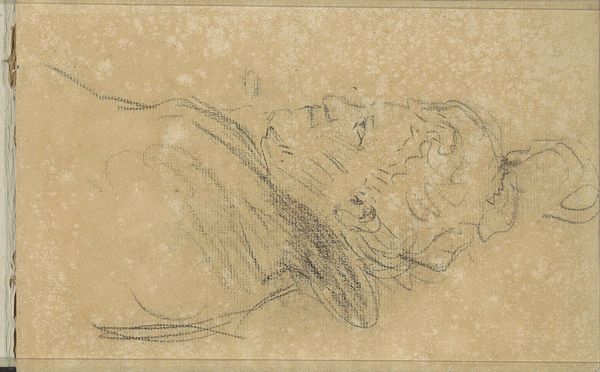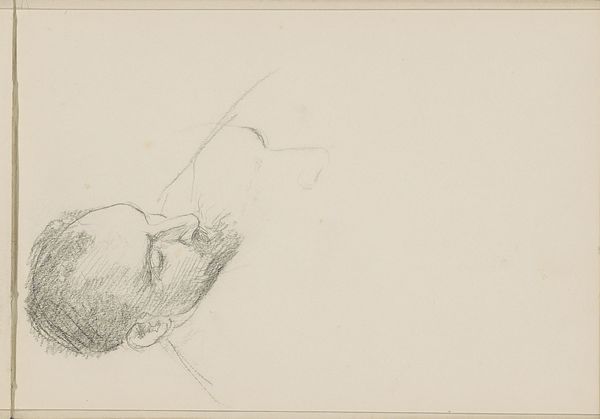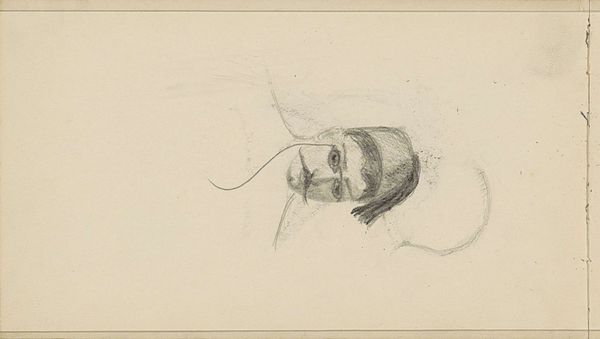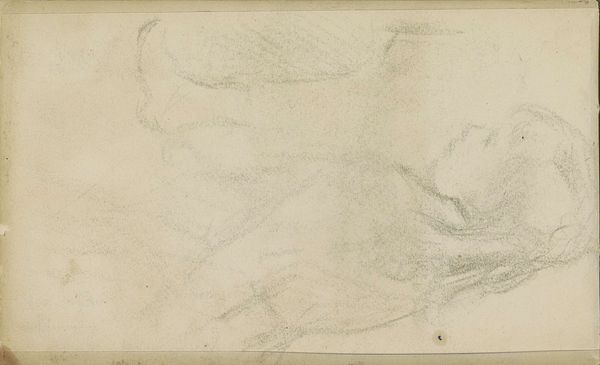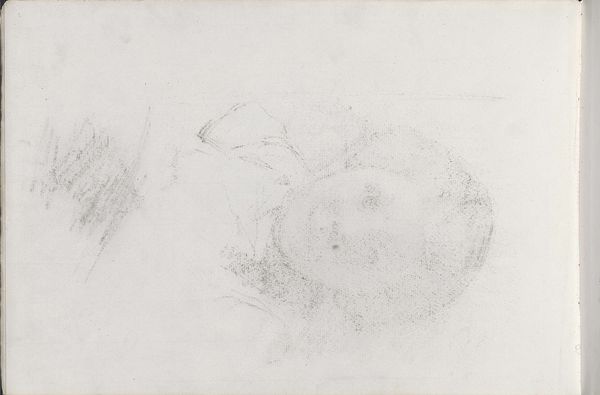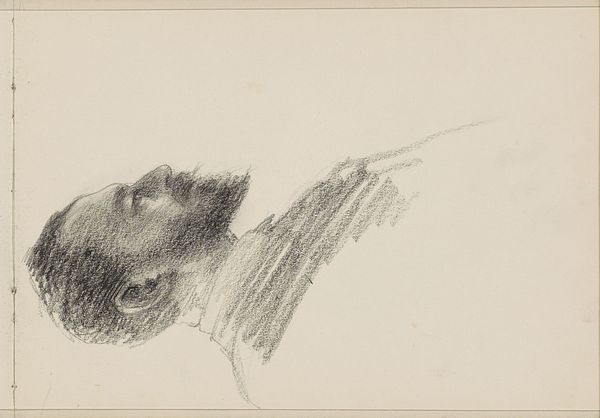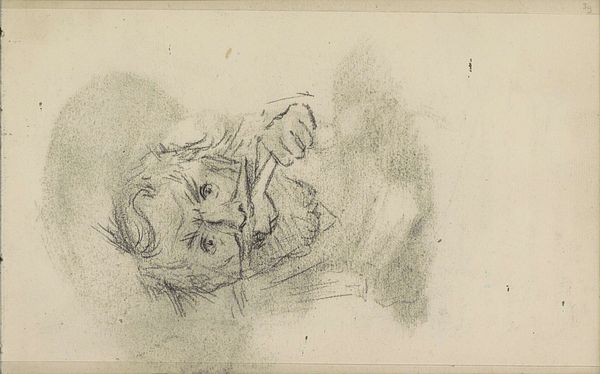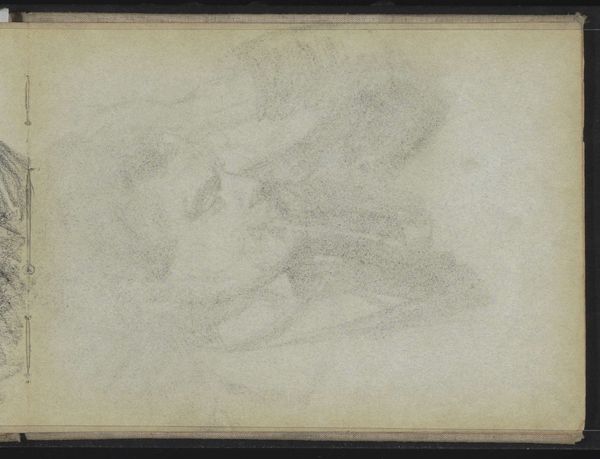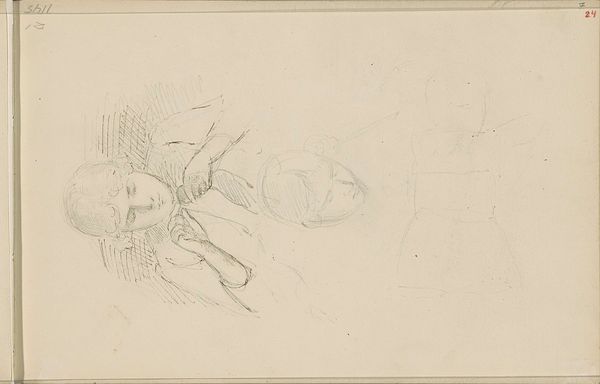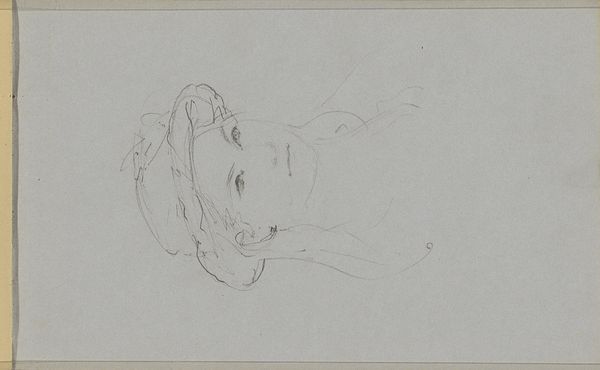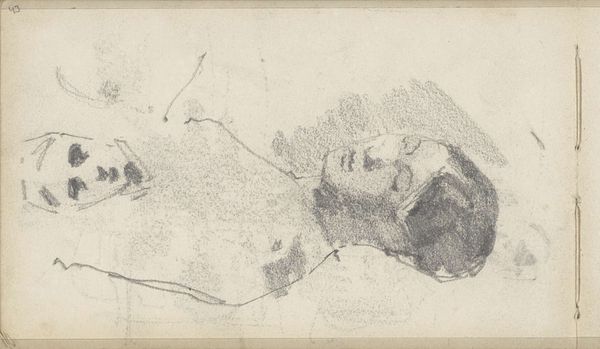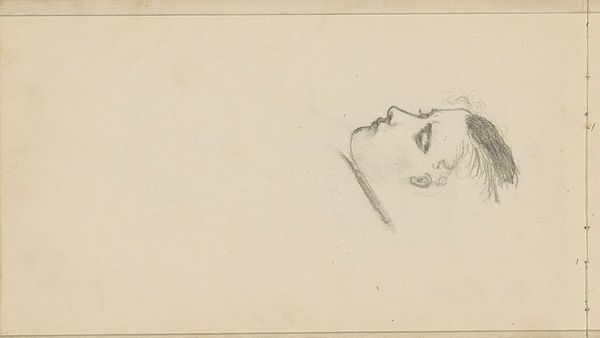
drawing, pencil, graphite
#
portrait
#
pencil drawn
#
drawing
#
etching
#
figuration
#
pencil
#
graphite
#
pencil work
#
realism
Copyright: Rijks Museum: Open Domain
Curator: Isaac Israels created this pencil and graphite drawing, *Abklatsch van de krijttekening op blad 3 recto*, sometime between 1875 and 1934. It’s part of the Rijksmuseum collection. My first impression? A rather ghostlike presence. Editor: Ghostlike indeed! It looks like an obscured or partially erased portrait, a shadow of a face. I’m immediately drawn to the subtle gradations in tone, the way the graphite delicately suggests form without fully committing. There’s a certain… spectral quality. Curator: Perhaps it speaks to the transient nature of memory itself? Israels may have been capturing the fleeting image of someone, knowing it would inevitably fade like the pencil strokes themselves. Think of the layering—Israels made a rubbing, *abklatsch* in Dutch, of a drawing already on a page. It speaks of reproduction and second-hand experience, filtered memory. Editor: That act of reproduction is fascinating. The *abklatsch* technique removes a layer of immediacy, introducing distance. Semiotically, it moves us from the indexical sign – the direct trace of the artist’s hand – towards a symbolic representation of memory itself, fragmented and ethereal. Curator: Exactly! The somewhat obscured quality makes it universally relatable; the person becomes less important than the universal concept of memory, a reminder that everything eventually becomes less distinct. What lingers are fragments, impressions. Editor: The composition itself underscores that fragmentation. The figure isn’t centered, edges blur into the background, lines appear broken. The image is constantly in danger of dissolving back into the blank page, a struggle between presence and absence. Even at that scale of the drawing’s materiality, there's such visual impact. Curator: Looking at this drawing, I realize it mirrors a poignant aspect of the human condition. We are all palimpsests of experiences, overlaid and often difficult to decipher, yet undeniably present in forming who we become. Editor: Yes, an apt visual representation of the complex and layered nature of both art and identity. Its beauty lies in the implicit potential within these indefinite outlines, provoking endless thought on our comprehension of form.
Comments
No comments
Be the first to comment and join the conversation on the ultimate creative platform.
